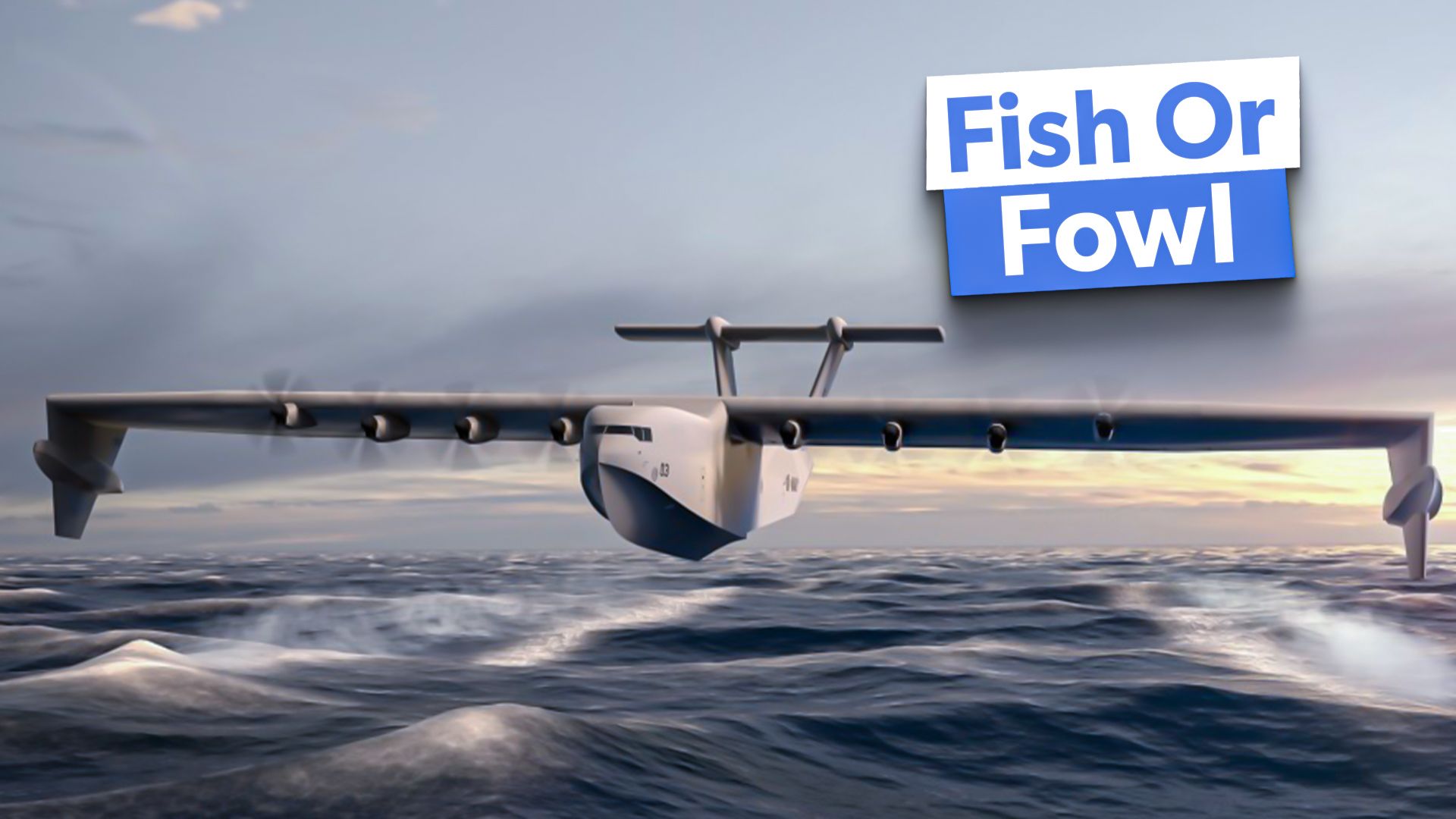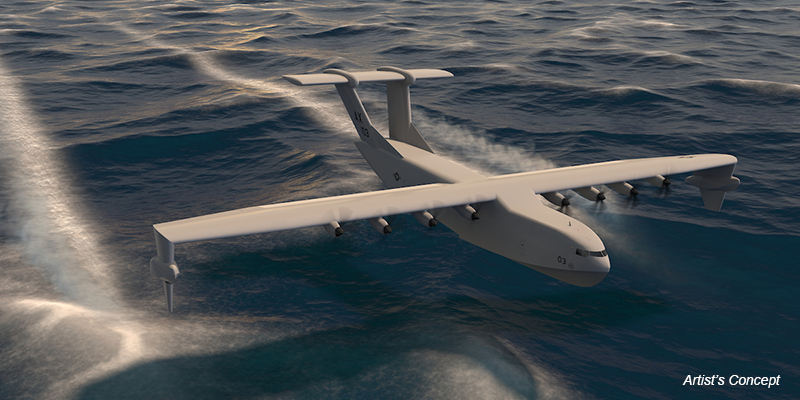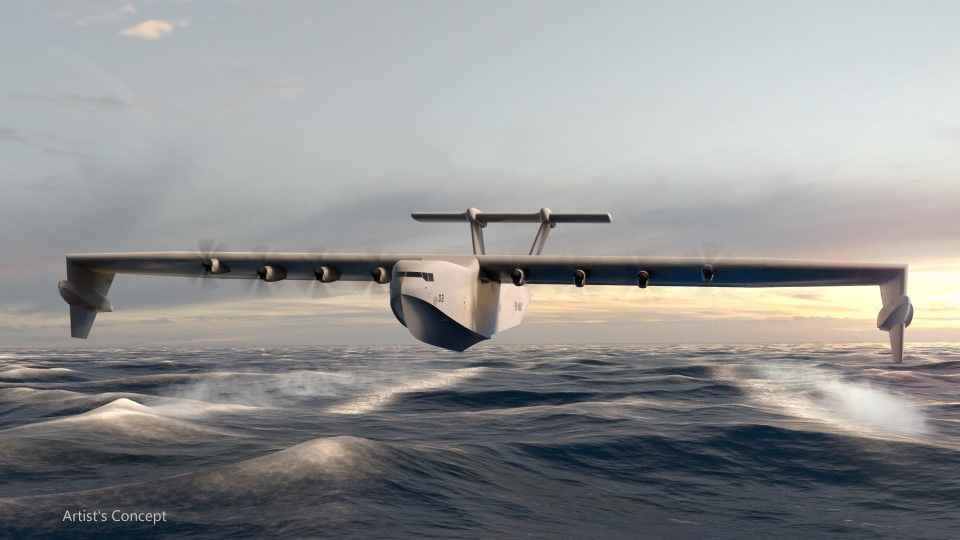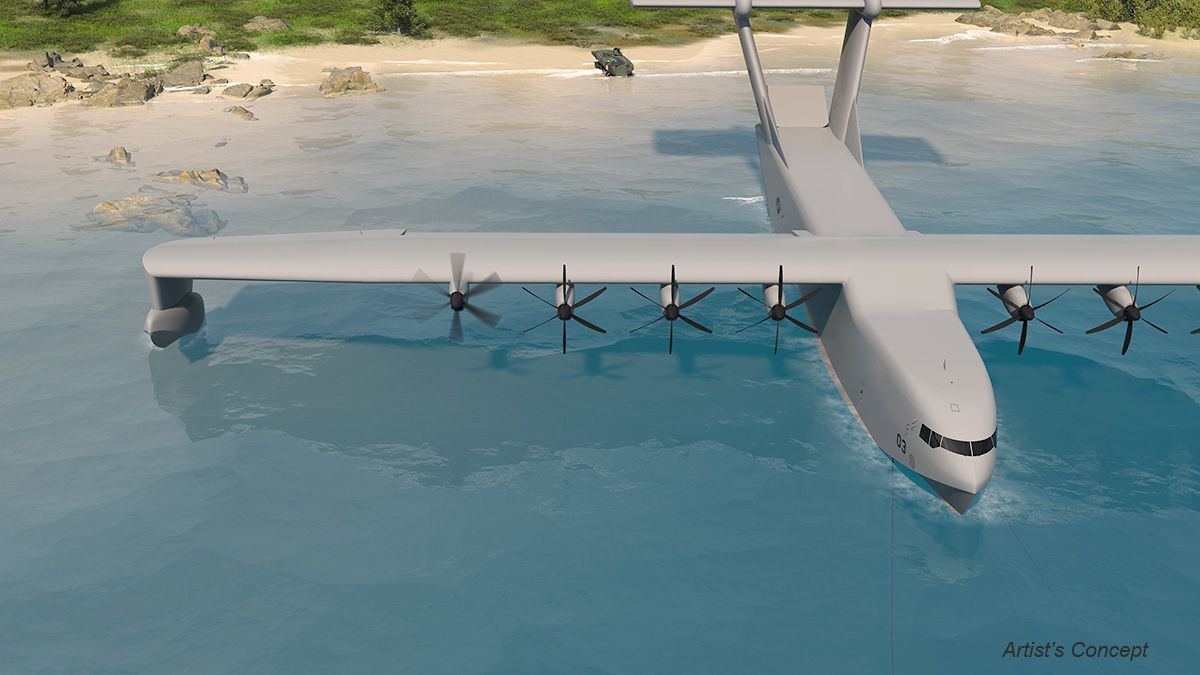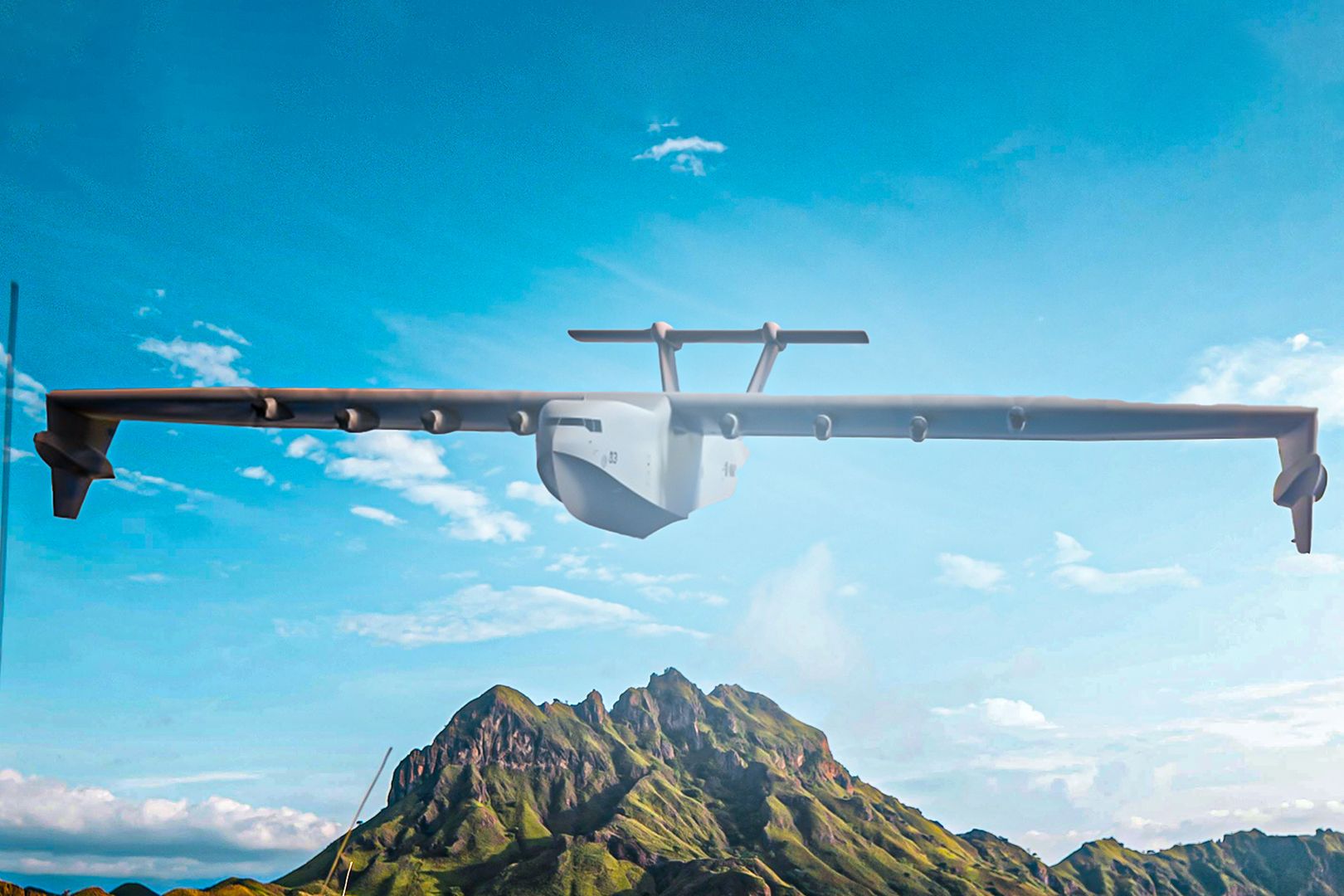Summary
- The Liberty Lifter aims to rapidly transport heavy loads and integrate air and sea transport for the US military.
- The US explored large ekranoplan ideas previously, like Boeing’s Pelican, but now DARPA seeks to realize these ideas with the Liberty Lifter.
- Liberty Lifter plans for costly and efficient manufacturing and can operate over water and different surfaces, combining air and naval capabilities.
Ekranoplans, or as they are also forgettably known, ground effect vehicles (GEV), were a major area of study and development during the Soviet Union. It has long been understood that if some formidable engineering challenges can be overcome, ekranoplans could be revolutionary in hybrid sea/airborne transportation. DARPA is one US company that is working to do just that with its new Liberty Lifter. But how would the Liberty Lifter work for the US Navy?
The United States considered building ekranoplans during the Cold War, and Boeing proposed the massive Pelican (an ultra-large transport aircraft) in the 2000s. However, Boeing’s ambitious concept was canceled before it really got started. Still, the idea was never truly abandoned, and now the Liberty Lifter is attempting to succeed where others failed.
Liberty Lifter: a hybrid sea/air-based transportation option
In short, the primary goal of the Liberty Lifter is to move a lot of stuff quickly. As DARPA (the company developing the Liberty Lifter states), “The Liberty Lifter program is currently designing and will build, float, and fly an affordable and innovative seaplane that can potentially transform fast logistics missions for the DOD and commerce.”
Photo: DARPA
|
Other notable ekranoplans |
Country |
Status: |
Role: |
|---|---|---|---|
|
Lun-class ekranoplan: |
Soviet Union |
Retired |
attack/transport |
|
Caspian Sea Monster: |
Soviet Union |
Destroyed |
prototype |
|
AirFish 8: |
Singapore |
In development |
small passenger ferry |
|
Boeing Pelican: |
United States |
Conceptual/canceled |
large military transport |
The pace at which the US fights a war can not be faster than its logistical ability to supply it. The faster the US can transport and move personnel and equipment, the harder and faster it can fight. The Liberty Lifter is intended to complement the speed of air transport with the bulk of ship transport.
In addition, the Liberty Lifter is expected to provide sea-based search and treasure and disaster response “at the scale of ships with the speed of air transport.”
It seems it is now the time for the US to lead the world with ekranoplan design. The Soviet Union led the world during the Cold War, but since then, almost nothing has been developed by Russia (even though the conceptual Beriev Be-2500 ekranoplan is sometimes teased).
The US Navy as a logistics organization
In some respects, the US military can be described as a logistics organization that also fights. The US Navy (along with the Air Force, Marines, and Army) has a unique set of requirements due to its interests and power projection in almost every corner of the globe.
Photo: DARPA
An age-old question: “What wins wars?” is complicated and can be answered in many ways. But one of the fundamental answers is “logistics, logistics, logistics.” Most militaries focus only on defending their own territory (e.g., Finland, Singapore, Ukraine). In contrast, the US military focuses on expeditionary wars to fight worldwide. While a very small group of countries (like Great Britain and France) also possess expeditionary capabilities, nothing comes remotely close to the United States.
If a major war broke out in the Middle East, Eastern Europe, or East Pacific, one of the greatest challenges facing the US Navy would be to get there quickly and sustain operations. Perhaps more than any other force, the United States faces the proverbial “tyranny of distance.” This takes time – it takes weeks for transport ships to cross the oceans to get personnel and materials where needed. This is where the Liberty Lifter comes in.
The vast bulk of the US military is not the 101st Airborne Division. While the United States Air Force operates an impressive number of large transport aircraft, a major land or navy force must mostly be transported and supplied by sea (and that’s slow).
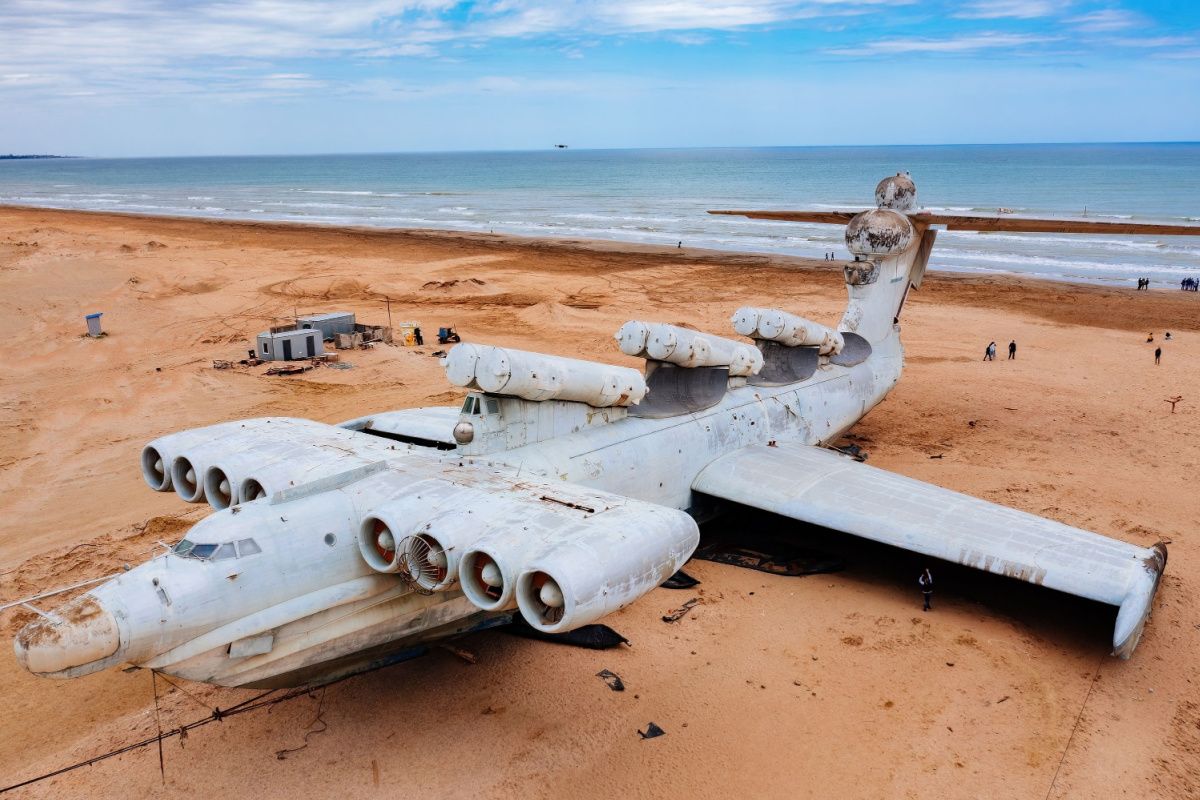
Related
When Boats Fly: 5 Remarkable Ekranoplans You Need To Know About
Large military “wing-in-ground” vehicles were built by the Soviets while small patrol and ferry types continue to be developed today.
Liberty Lifter: neither fish nor fowl
As an ekranoplan, the Liberty Lifter will be able to operate efficiently over long distances, flying low over the ocean surface in a wide range of conditions. It will also be able to fly and sustain altitudes of up to 10,000 feet (for short periods).
Photo: DARPA
The Liberty Lifter will be able to transport heavy and bulky equipment far faster than existing sea lift platforms. It is also planned to have low-cost manufacturing techniques and materials. The Liberty Lifter will also be able to operate with little existing infrastructure (e.g., it doesn’t require a runway).
|
Liberty Lifter proposed a profile |
|
|---|---|
|
Speed: |
180 knots |
|
Payload: |
180,000 lbs |
|
Wingspan: |
approx. 200 feet |
|
Cruising altitude: |
approx. 100 feet |
|
Power: |
8x 5,000 hp engines |
In addition to operating over water (including moderately rough seas), the Liberty Lifter may be able to cruise over any relatively flat surface, such as lakes, deserts, and pack ice. The craft has been described as “neither fish nor fowl” as it can float, cross the seas, and fly. As the US Naval Institute states, it has “few of the virtues of either aircraft or boats while retaining many of each platform’s vices.”
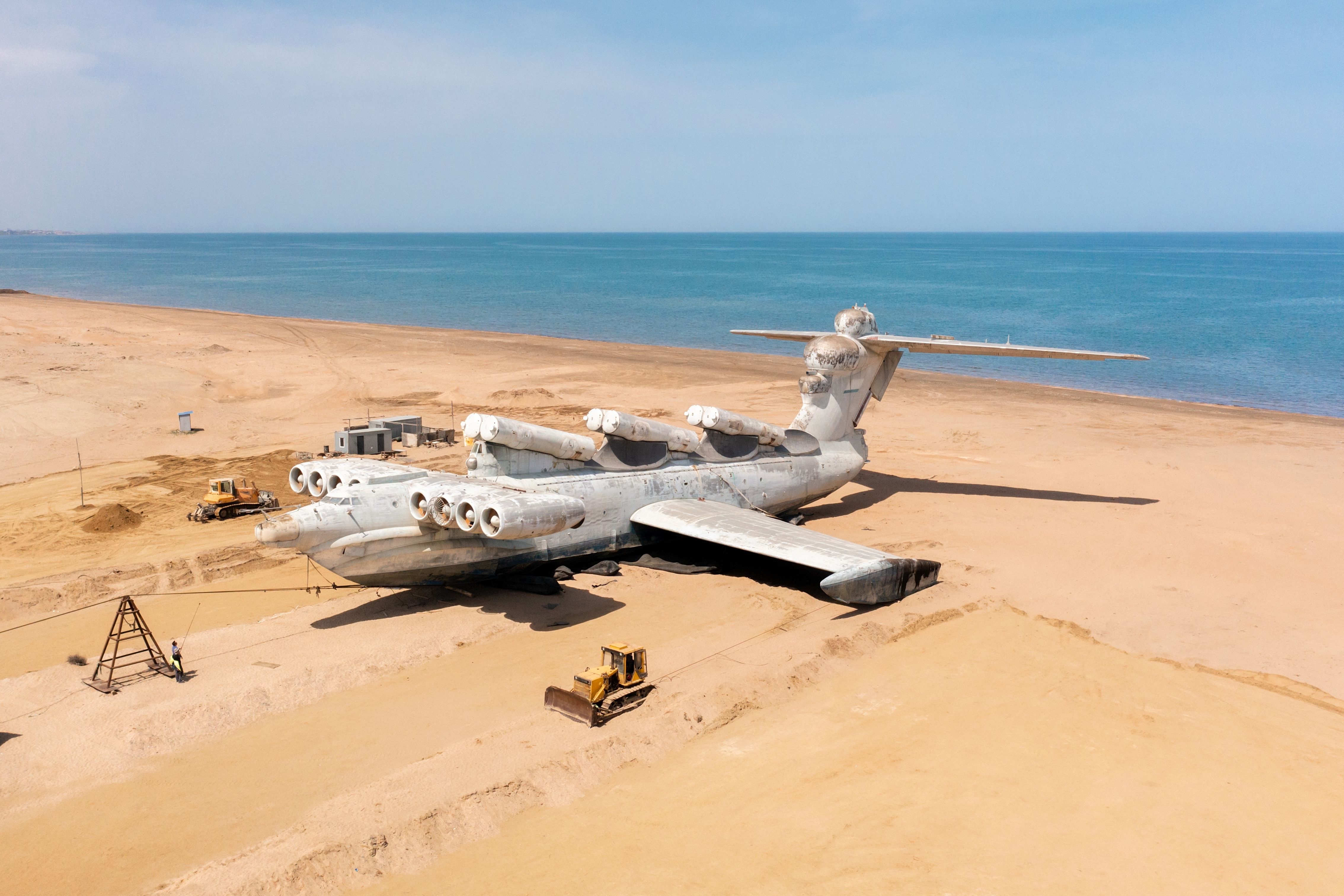
Related
The Caspian Sea Monster – The Soviet Union’s Odd Half-Boat Half-Plane
The unique flying boat initially confused US intelligence after its discovery.
Liberty Lifter development
The Liberty Lifter is currently in Phase 1b development (where work is focused on platform design and risk reduction). The Preliminary Design Review is expected in early 2025. A demonstrator Liberty Lifter is hoped to be built with its first flight in late 2027 or early 2028.
|
Liberty Lifter timeline: |
|
|---|---|
|
Project launch: |
2022 |
|
Status: |
Phase 1b development |
|
Preliminary Design Review: |
Expected early 2025 |
|
First flight: |
Expected late 2027 / early 2028 |
|
In service: |
Unknown (likely post-2030) |
Photo: DARPA
The demonstrator is planned to be scaled down to the size of a C-130 Hercules, but the production model could be the size of a C-17 Globemaster.

